As you progress and continue your practice of meditation, your first four energy bodies (physical, etheric, mental and emotional) will start to stabilize. Developing and working with these first four energy bodies provides you with a solid foundation to go deeper and take meditation to more advanced levels, so you can become a free conscious spiritual being.
In monasteries and deep in the mountains of Western China, the Taoists developed a complete and exact science of meditation. They developed advanced methods for those who were ready that included the Inner Dissolving Method, sexual meditation and inner alchemy.
In this blog, we will provide a brief overview of some of these more advanced meditation practices. Energy Arts also offers an online course, the Taoist Meditation Circle, for those who wish to continue to expand their knowledge on the subject.
The 10,000 Agendas
In my decades of teaching meditation, I have found that most people have issues or agendas that they want to directly address. People have many agendas. Maybe it is that a person had a terrible childhood, has recently been through a divorce, or they have just faced the death of a loved one.
The question arises, ‘How can I use meditation to deal with this agenda?’ The Taoist meditation framework has a concept called ‘The 10,000 Agendas’, and it is a useful way to approach meditation for a specific purpose.
An agenda is anything you want to address because you know enough is enough and you want to be rid of it. The content of an agenda can be whatever you wish it to be. One application of the dissolving process is to let go of whatever needs to drop away.
You make whatever comes up in your life–no matter what it might be, or how it is manifesting–into an agenda so you can dissolve it. This technique involves the way you move your energy. It starts by activating your intent.
Formulating an Agenda – Preparing for Meditation
If you want your mind to be magnetized toward a particular agenda, you must contemplate it before you begin dissolving. If you do so during the day or an hour before you practice, it’s usually enough. Or, you could focus for the next few minutes on the emotion associated with your agenda as you scan downward. You could also think about a specific situation that you’re holding on to. Maybe you think about how someone lied to you, or how you lost in a situation when you expected to win.
Pick something and focus on it. Now, you can go about starting to release your agenda in one of two ways.
- Generally continue to think about a specific emotion
- Think about a particular issue that you have in relationship to that emotion
Either way, you’re formulating an agenda. It doesn’t much matter because if your mind is focusing on a particular emotion, your energy will start moving toward where it is inside you. When you truly become free inside, you will no longer experience this pull.
Experiencing the full range of emotions is natural and healthy, but as your ability to dissolve agendas increases, you won’t experience the spikes where you erupt in anger, burst into tears or jump for joy with little or no stimulus. You will just flow from one emotion to the next and your emotional response will be more proportional to the positive or negative experiences themselves.
Agendas and Your Internal Organs
When you start thinking about a particular emotion, rub or press against the corresponding organ to help make you aware of the ways in which emotions can also be a bodily experience:
- Fear is linked to the kidneys
- Anger is linked to the liver
- Grief is linked to the lungs
- Anxiety is linked to the heart
Sit down and think about your agenda for 5-10 minutes before you start meditating. Think about why you hold on to this issue. After 10 minutes, let your mind completely relax. Let everything go out of your mind and just sit there and wait. At some point, you will get a very light sense of the emotions associated with your agenda, or at least some sense of stirring inside.
Start from the top of your head and dissolve down to the bottom of your belly. As you continue dissolving down from the top of your head, you are always feeling for the energy behind whatever comes into your awareness. Thoughts will come into your awareness and you will start talking to yourself.
It’s very important that you don’t try to edit the thoughts. Stay with the energy behind them.
Suddenly you can find yourself going into an entirely different space of your inner world than where you have ever been before. Let whatever thoughts, whatever conversations you are having in your head-the monkey mind jumping from tree to tree-come up, but keep aware of the energy behind these conversations.
Keep dissolving and staying focused on the energy behind what you are feeling.
Some agendas for consideration:
- Greed
- Fear
- Anger
- Depression
- Loss of a loved one
- Forgiveness
- Anxiety
- Pain–whether physical, emotional or mental
The 10,000 Agendas are an entire body of knowledge. You can find more information about this in our Tao of Letting Go audio program.
The Taoist Inner Dissolving Process
All the meditation practices of the Taoist Water method involve dissolving and resolving the bound blockages of your first six energy bodies until you become internally free.
Both the outer and inner dissolving processes begin when you consciously use your awareness to focus your mind on any specific, condensed energy shape or pattern within yourself. You then dissipate that shape until it no longer obstructs your mind, body or spirit in any way.
The phrase used to describe the outer dissolving process has for millennia been “ice to water, water to gas.” “Ice” refers to the blocked, congealed energy; “water” refers to the accepting and relaxing of your internal blockage until it no longer causes you tension; while “gas” refers to the complete release of all the original bound energy moving away from your physical body. If not completely released, the energy may revert to ice.
Inner Dissolving Process
In contrast, the phrase used for the inner dissolving process of the Water method is “ice to water, water to space,” where “space” means the vast internal space that exists inside the body, that space being as infinite as the universe.
In the ice-to-water phase of outer dissolving (also used in qigong, bagua and tai chi), the solid, completely bound and condensed energetic shape (ice) is released until it relaxes and reaches the surface of your skin (water).
In the inner dissolving process, your bound energy is also released at the point of the blockage until it becomes relaxed, soft and amorphous (water). Water, however, contains the inherent capacity to re-condense to ice.
Releasing Blocked Energy
Your “liquid” energy can now move in two different directions:
1) In the outer dissolving process, also used in standing qigong, you release your blocked chi from your skin, to outside your physical body, and then to the edge of your chi/etheric body, or even beyond (water to gas). The previously condensed energy is now neutral, unblocked and shapeless.
2) When you move into the water-to-space phase of the inner dissolving process, you release all blocked content of your felt sensations by imploding your energy into the inner space that your previously condensed, blocked energy-shape occupied, thereby converting your blocked energy into consciousness without content (a stage of emptiness).
In the early phases of the sitting mode of meditation, it is important that as you dissolve a blockage you release its energy inward deeper into your internal space (that is, consciousness). The Taoist position is that there is as much internal space inside you as there is space in the whole external universe.
Over time in Taoist meditation, the inner and outer dissolving practices are combined, so that as you dissolve inward–either sequentially or simultaneously–you also dissolve outward toward the cosmos. Eventually, this process allows your mind to stabilize in the middle ground, the home of consciousness where inner and outer and that which is neither and both, exist.
Relationship between the Mind and a Blockage
In the dissolving process, how does your mind contact and then dissolve the tension or blockage in your body, regardless of the denseness or subtlety of that blockage? In other words, how can you deliberately contact, become aware of and feel the blockages in your body with your mind only? People with normal nerves will feel pain if you hit them forcefully in a sensitive body part. Sometime later, however, they will feel the “blockages” inside their body as a throbbing pain.
Likewise, a person can be erotically stimulated in a sensitive spot and feel pleasure. In strong emotional situations, such as falling in love, experiencing the death of someone close or being frustrated with situations beyond your control, you can consciously feel your emotions – positive or negative.
With a little bit of concentrated “mind effort,” you can increase, decrease or mitigate your physical pain, pleasure or emotions. In other words, you can feel what happens inside you with your mind.
In externally induced situations, such as those just described, your whole mind concentrates instead of being diffused. All your attention is drawn to the “object” at hand: be it pain, pleasure or emotion. The totality of your awareness, “the subjective observer,” is directed at this object.
All this requires that the mind be focused, not scattered or distracted.
For instance, consider a baby that has fallen down and has real pain from a physical injury that would normally keep it crying for 10-15 minutes. The baby’s mind is fully focused on the pain. Every parent knows that if you can distract the baby with something more absorbing than the pain, the baby’s attention can be diverted to a new “object,” such as a favorite food or a toy. Chances are that the baby will stop crying and focus on the new object.
In dissolving a blockage, your recognition or interpretation of what you are observing along with your feelings affects you, the “observer.” By going deeper and deeper inside the blockage toward its source, your mind moves further away from the original surface point of contact with the blockage.
Sexual Meditation
Since the dawn of time a continuum of beliefs has always existed concerning the meanings and permissible rules of sexual engagement. At one end of the continuum, sex is seen as a nasty business, bordering on evil, to be engaged in as little as possible and only according to the rules of the prevailing religion. At the other end of the continuum, consensual sex between a man and a woman is viewed as a healthy, normal human activity and a celebration of the life force.
Sex has the potential to be either wonderful or a mess, depending on the sanity, internal balance and openness of the participants. Westerners often imbue all sorts of meanings to normal consensual sex, but to the Taoists, sex is only another chi or meditation practice. It is not considered prurient or non-spiritual in any philosophical sense.
The practice of how you use Taoist meditation is basically the same, regardless of modality. That is, you can meditate while standing, sitting, moving, lying down, or engaging in partner exercises. So the same inner and outer dissolving techniques can be used, and there are also many different partner exercises.
Why Meditate with Sex?
During sexual activity most people become more fully alive, the energy of the body becomes flush, and the mind and emotions soar. For many people it is easier to feel and influence the body’s energies and physical tissues during sexual play than at any other time. Sex can unleash the procreative force, which also unleashes human creativity and awareness.
However, a certain percentage of the population will always find it more comfortable to access the chi through solo meditative means rather than through the duality of sexual meditation.
Through passionate sex, your innate physical and psychic capacities can become accessible naturally. Consequently, for many people the sexual act naturally enhances their awareness of chi sensations to which they were previously numb. If you keep your awareness open while making love, you can begin to feel the different kinds of physical and energetic blockages inside your system. You can then learn to direct your own internal energy generated from lovemaking into an injured or diseased part of your body, to dissolve and heal it.
The Power of Two Working in Union
In like manner, you can also direct your partner’s sexual energy to “loop into” your blockages to aid in dissolving them. Conversely, your partner can direct his or her energy toward helping your particular problem. You can then mutually dissolve any blocked energy that happens to exist in either of your bodies.
The core of sexual meditation involves adapting the Taoist meditative dissolving practice to lovemaking. Once you have linked your consciousness to that of your sexual partner, your mind can go into his or her mind-stream for the purpose of dissolving any blockages in the entwined energetic system.
The smoothest way on the face of the earth to achieve direct contact with the consciousness of another is through making love. Taoists believe it takes much more skill, psychic power and finesse to gain such contact with another person when separate, than it does through meditative sex. The reason is that in sexual involvement, energy is increased and immediate.
Inner Alchemy
There were two forms of alchemy in ancient China: external alchemy and internal alchemy. When we think of external alchemy, which was also practiced in medieval Europe and the Middle East, we tend to conjure up images of a wizard wearing a black gown and pointed hat, toiling in a sequestered laboratory with flasks, beakers and burners trying to turn lead into gold.
When internal alchemy is mentioned, most people don’t know what picture to conjure. Some might dredge up an image of a yogi sitting cross-legged in a cave, back straight and eyes closed, working on “enlightenment,” or they might envision mystic charts with arcane symbols of energy centers, chakras and intricate lines representing energy channels.
Today people are practicing internal alchemy not only in caves and monasteries, but also in their homes using the same concepts of the internal alchemists of old: Transmute, change, transfigure, stabilize and continue.
External Alchemy
External alchemists seek to create, distill and magically transmute physical substances, especially herbs, minerals and metals. Their costly lab experiments are aimed at two great accomplishments: turning lead into gold and creating a physical substance called the “philosopher’s stone,” which when ingested supposedly cured any disease, reversed the aging process and conferred physical immortality. The external alchemists are part of a larger mystical tradition. As such, it is a mistake to think of them simply as the precursors of modern chemists.
In antiquity, internal and external alchemists were held to be wise men with developed souls.
Internal Alchemy
Internal alchemy uses as its laboratory the human body, mind and consciousness. Consequently, for the internal alchemists the equivalent of changing lead into gold becomes the changing of their own foolishness into wisdom, greed into generosity, anger into compassion, judgment into equanimity and fear into acceptance. They don’t seek physical immortality so much as complete freedom for consciousness or the soul. Although the term internal alchemy may mean different things in various Taoist traditions, the common bond is a series of transformations.
In Taoist internal alchemy, the alchemical precepts progress to living in the Tao by means of a series of transformations: Body to chi to spirit to emptiness to Tao.
There are many ways to accomplish these transformations. Most are inexplicable in writing, as they must be taught by a living adept. A central technique, however, is the dissolving practice with specific methodologies for each of the eight energy bodies. Click here to learn more about our Taoist Meditation program.


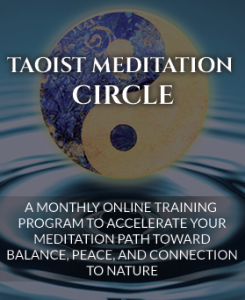
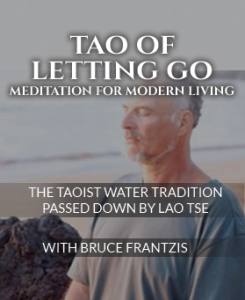
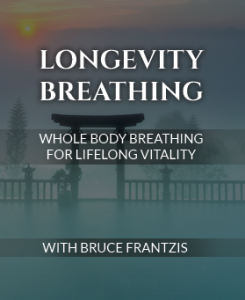
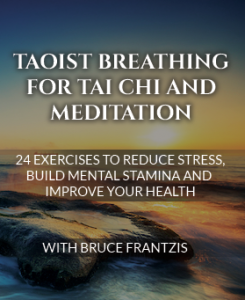
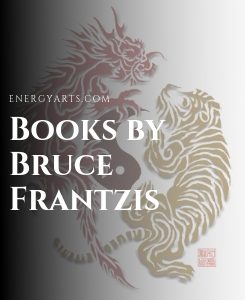
Please teach me to meditate.
Hi Will,
Glad to see your enthusiasm! We have a great online program from Bruce that is perfect for learning Taoist Meditation. You can find out more about it here.
Thank you for sharing this. It is highly appreciated.
This is really good stuff.
Please thank Bruce for making this available 😉
Thank you for sharing this. It is highly appreciated.